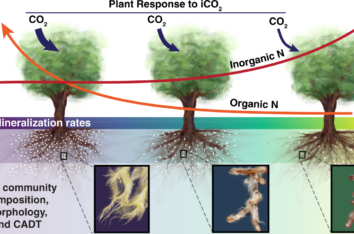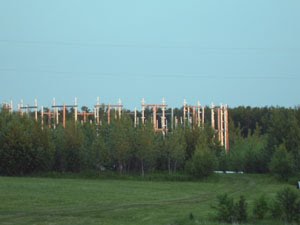The rate at which plants photosynthesize, thereby capturing carbon from the atmosphere, is limited by a number of factors including the availability of nitrogen (N) in soil. Past research has presumed that plants exclusively use inorganic nitrogen (ammonium, nitrate) for growth. Current work suggests that plants may have access to additional types of nitrogen in organic N forms, also present in the soil. If and how plants access these other forms of N will impact their growth and ability to pull CO2 from the atmosphere.
Recent global level modeling efforts indicate that trees that associate with ectomycorrhizal fungi mutualists will be fertilized by increasing concentrations of atmospheric CO2 due to the ECM acting to extend the root system and increasing plant access to limiting nutrients, including organic N. Other evidence suggests that C storage in forest soils may be due to enzymatic activity of ECM instead. Both models rely on the untested claim that ECM fungi mobilize N form SOM and provide access to this N to host trees. Since direct evidence that ECM fungi can function in this role is lacking, the goals of this project are to understand the extent to which root-associated fungi are liberating organic N from soil for trees and how they do so. This involves investigating if ECM have these genes, how common they are in varied N-available environments and if these genes are expressed under field conditions.



